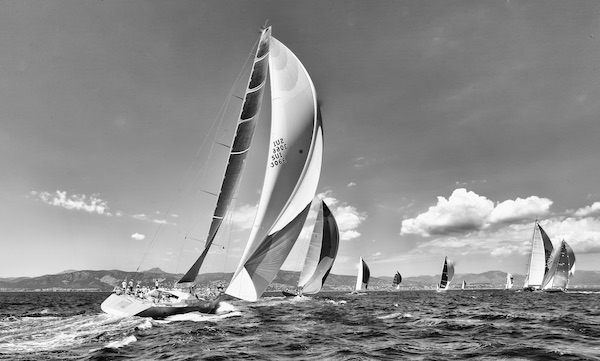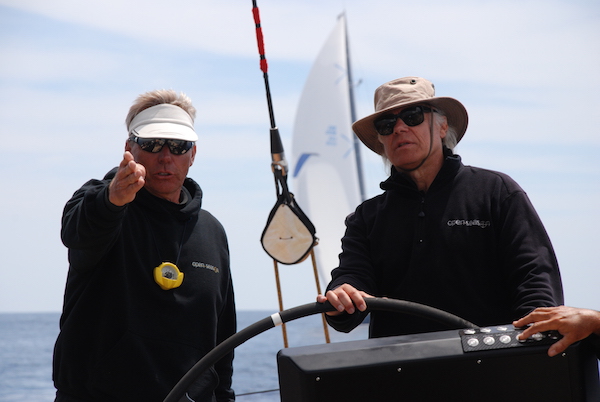A 'rockstar' race crew
During a regatta, the calibre of sailors on board the average superyacht resembles teams similar to those you would find at the America’s Cup. TSO asks why the 'rockstar' race crews are necessary and looks at their impact on the regatta circuit.…
Since the first Bucket regatta was organised in 1986, the superyacht regatta scene has experienced exponential growth. With yachts increasing in size and the racing becoming more competitive, Corinthian spirit has been replaced by fierce competition. Now, the calibre of sailors on board the average superyacht during a regatta resembles teams similar to those you would find at the America’s Cup or World Championships. The Superyacht Owner asks why the 'rockstar' race crews are necessary and looks at their impact on the regatta circuit.
On board Open Season
The 2007 America’s Cup signaled the final event in which the International America’s Cup Class yachts were raced. After a long legal battle, the decision was made that the 2010 America’s Cup would be raced on multi-hulls. The switch from heavy monohull sailboats to 72ft, wing-sailed catamarans capable of reaching 30 knots not only meant that half the number of people were needed to sail them, but also that younger and fitter crews were put in place, meaning that many of the talented, more experienced sailors lost their jobs.
Incidentally, the intervening years of 2009 and 2010 saw a record jump in the number of participating yachts in the St Barths Bucket even though the world was still suffering from the impact of the Global Financial Crisis. Witnessing this growth first-hand, Ib Ussing Andersen, founder of North Sails Europe, believes it was due to the new influx of skills and expertise brought in by the America’s Cup professionals. “The 2009 Bucket was the first year when all the America’s Cup guys who had lost their jobs came to compete,” he recalls. “It was brilliant because it meant that all that experience was not wasted.”
Andersen strongly believes that the participation of professionals has been the cornerstone on which superyacht regattas have flourished. “It is why superyacht racing has taken off so much,” he explains. “The pros now have experience of the industry and have learnt how to deal with owners, and the owners have trusted advisors who can guide them through a racing programme – they feel safe and are assured that they have a real chance of winning.”
The Superyacht Cup,by Michael Kurtz, Pantaenius
With the advances being made in superyacht technology and design comes greater expectations of better results. America’s Cup sailor and Olympic champion Jochen Schümann, who has been involved with a variety of superyacht racing programmes, recognises that this means a greater demand for professionals on board. “It is just how the world is functioning – everyone wants perfection, whether it’s from the engineering side or from the sailing experience of the race crew on the practical side,” he explains.
“Superyacht regattas are changing because the boats are getting bigger, and that is complicated because the technical engineering aspects are getting really sophisticated. Sometimes we are touching the limits of what can be reliable for racing superyachts. You need the experience of the professional crew because if there are any mistakes something bad could happen: damage or other experiences that you don’t want to have.”
But not everyone is welcoming of race crew on board superyachts. Hosting them can be very challenging for the permanent crew, whose main focus is a duty of care to the boat and owner, rather than to achieve the best result possible. “Sometimes a race crew doesn’t pay enough attention to the boat,” admits Captain Mattia Dzaja of SY Ohana. “They are keen to avoid big damages but yacht care is simply not in their vocabulary. It doesn’t mean that they don’t respect the yacht but they are too busy trying to get the boat to sail fast and to close a perfect gybe than to avoid knocking the hull or deckhouse.”
Open Season's tactician Jochen Schümann (left) and owner Thomas Bscher (right)
With professional race crew now the norm at regattas, it is a rarity to see an owner at the helm. While this is necessary for safety reasons, and to ensure the best results, some may believe that it is detaching the owners from the racing and damaging the overall spirit of the events. The Wally Class, however, still specifies that the owner must be helming throughout a race or otherwise incur a penalty. Owner of Open Season, Thomas Bscher, thinks this is a very important concept. “If you only have America’s Cup helmsmen then the owner is removed from the action and the class doesn’t work anymore,” he explains.
Not only has the increasing popularity of superyacht regattas provided a platform for some of the world’s most talented sailors, the events themselves also have benefited enormously from their professional experience and expertise. The potential safety hazards during regattas are significant, and these crews assist in ensuring the safety of everyone involved. Their value to the scene is second to none, helping owners get a real sense of professional sailing so that the superyacht regatta can be supported and continued for years to come.
Click here to become part of The Superyacht Group community, and join us in our mission to make this industry accessible to all, and prosperous for the long-term. We are offering access to the superyacht industry’s most comprehensive and longstanding archive of business-critical information, as well as a comprehensive, real-time superyacht fleet database, for just £10 per month, because we are One Industry with One Mission. Sign up here.






